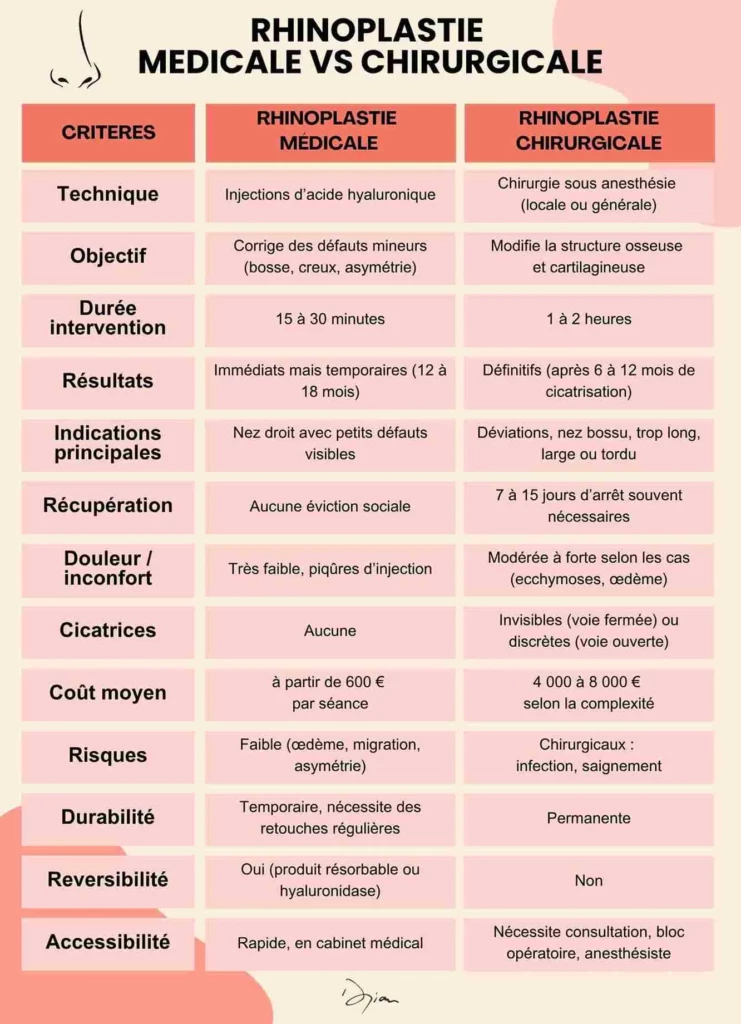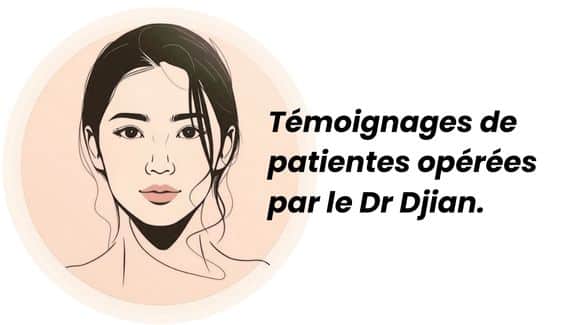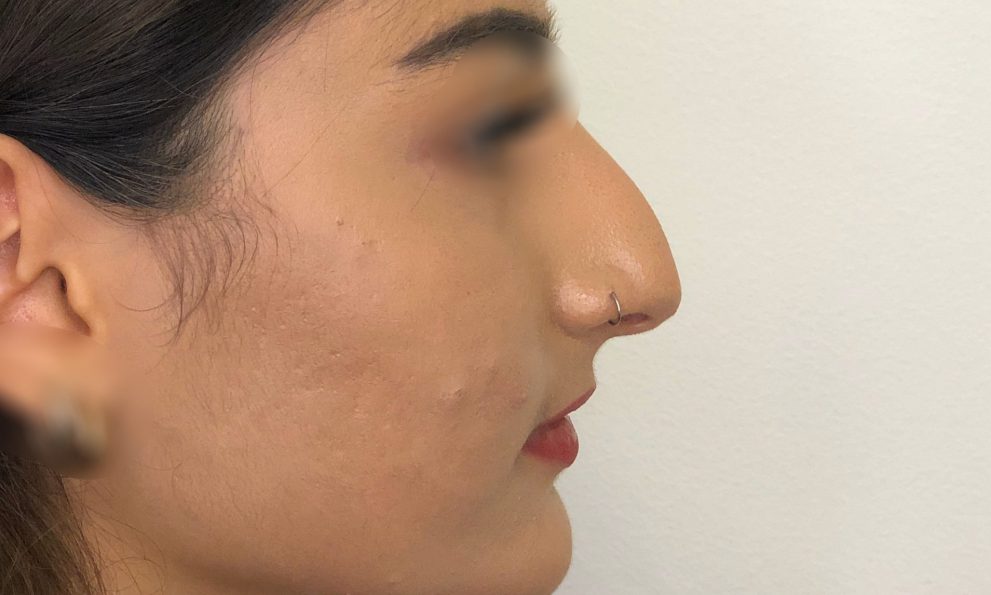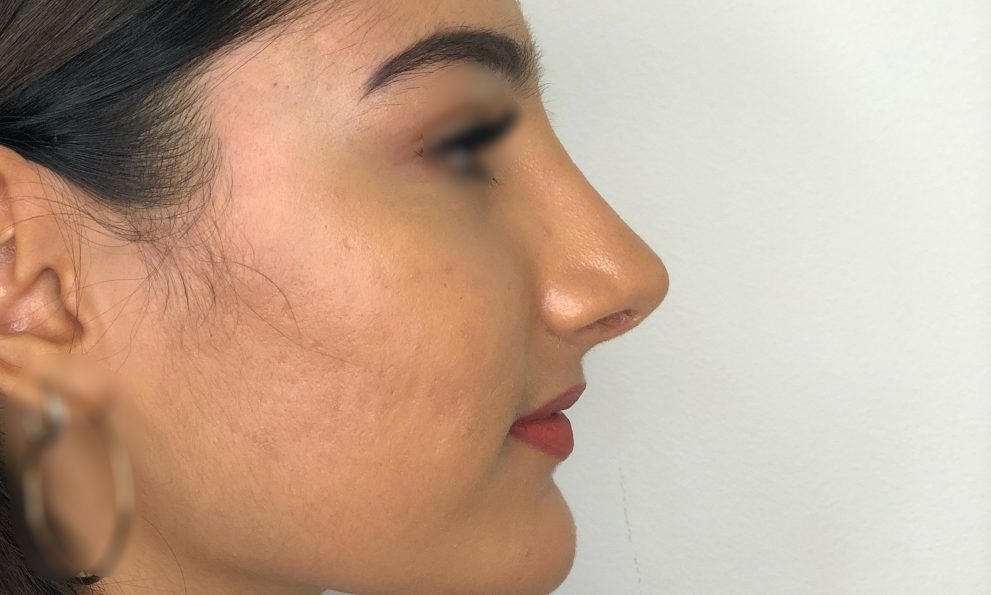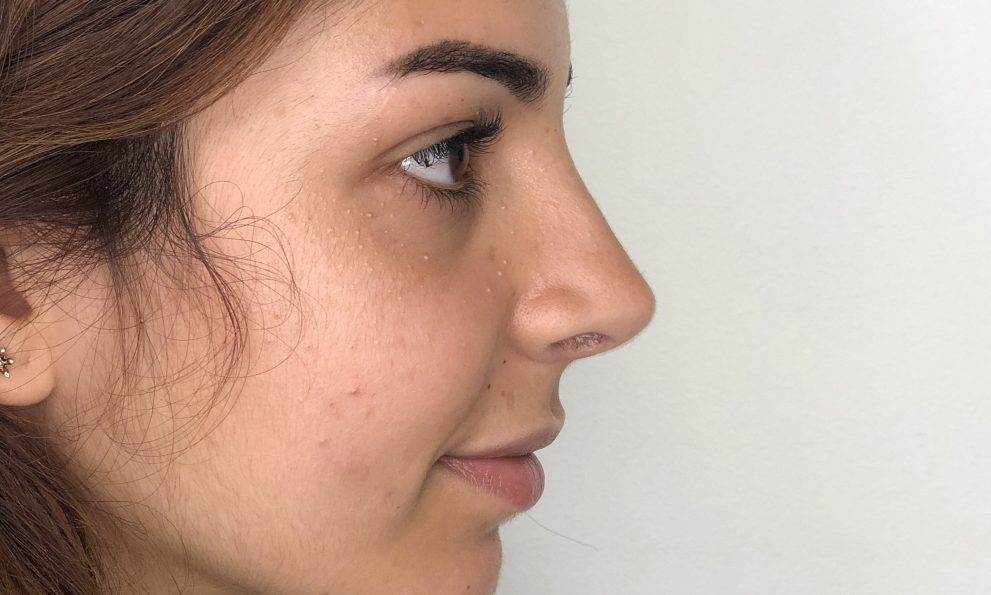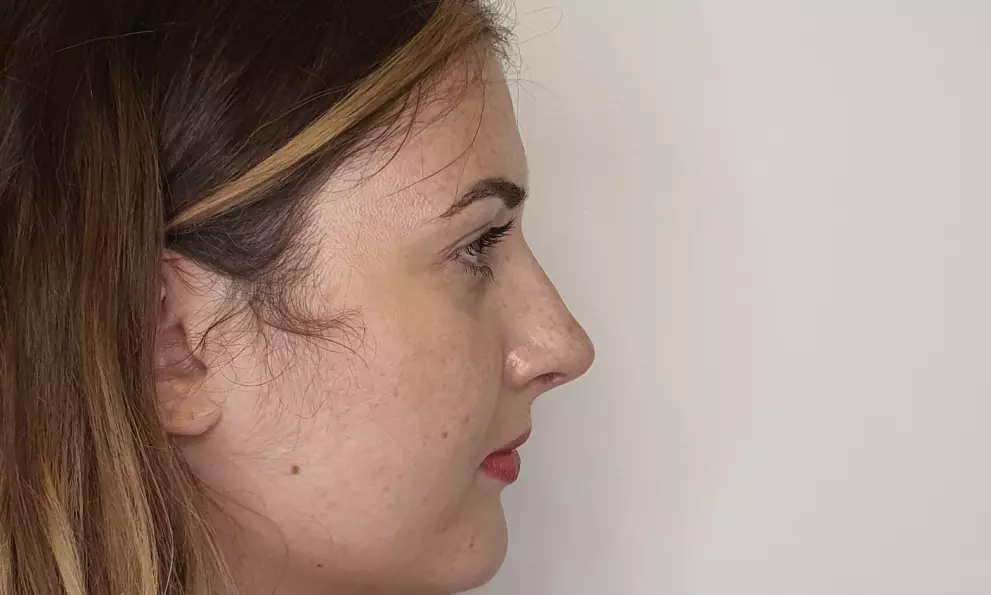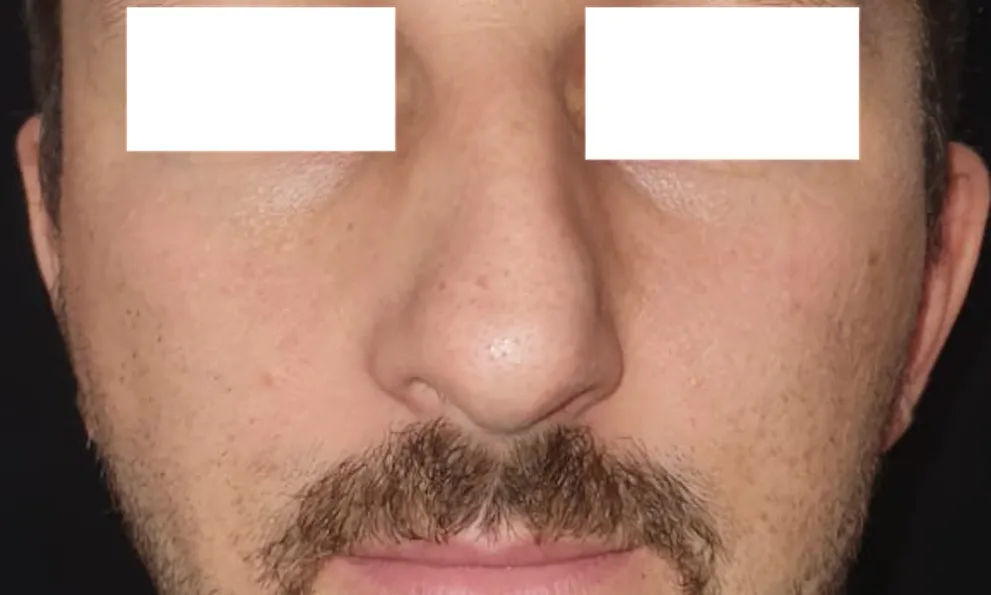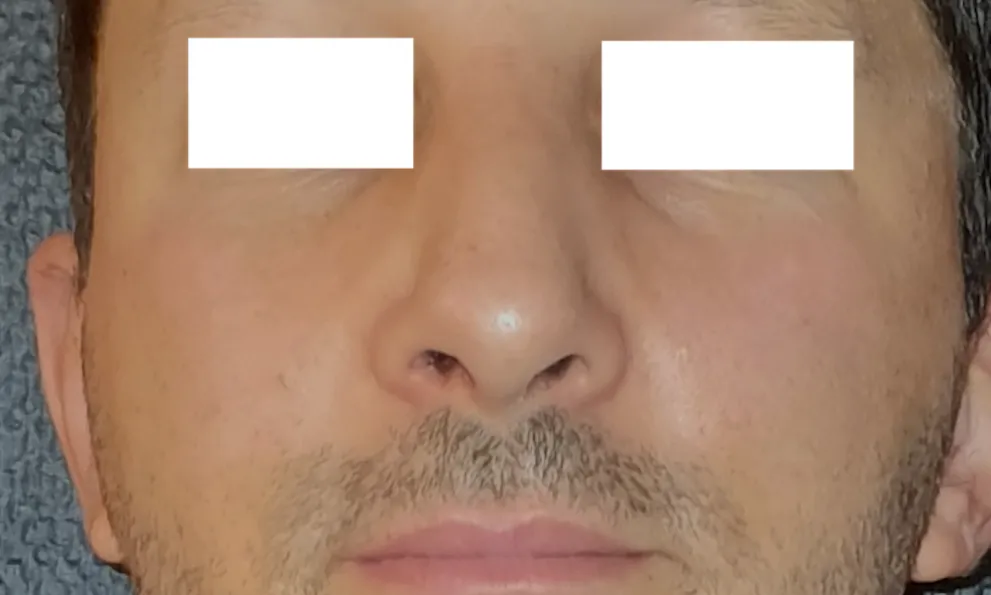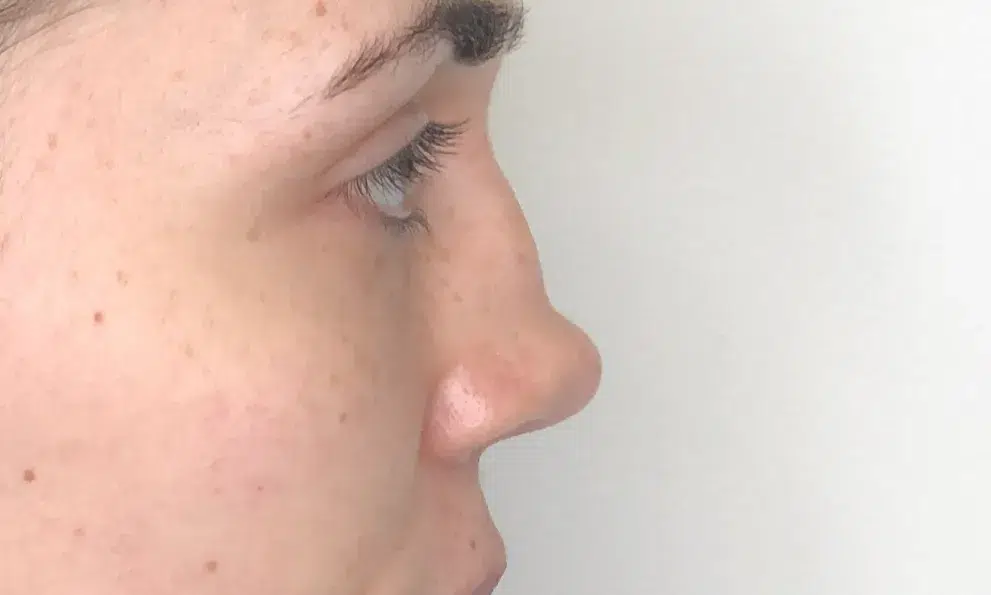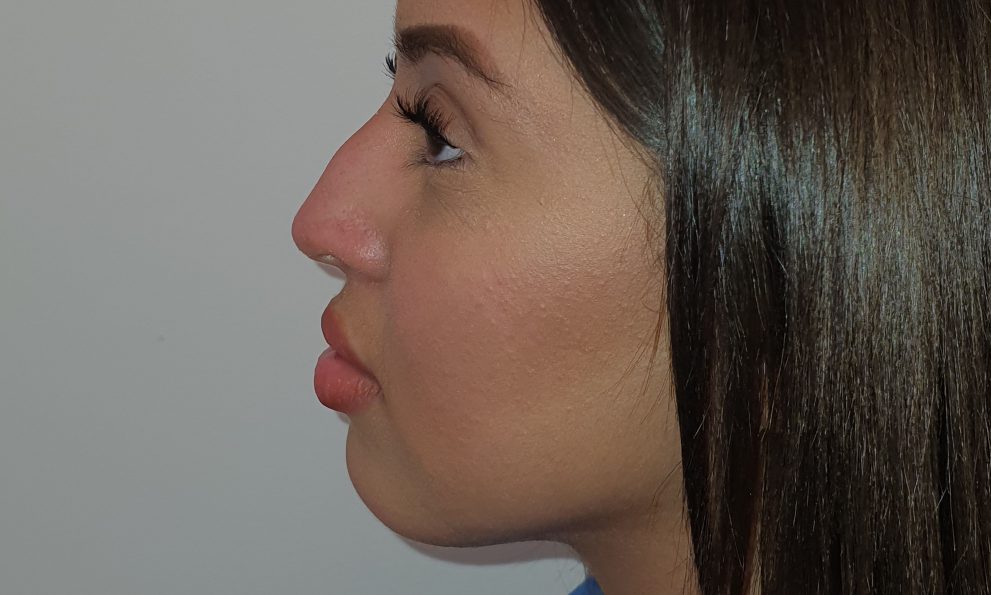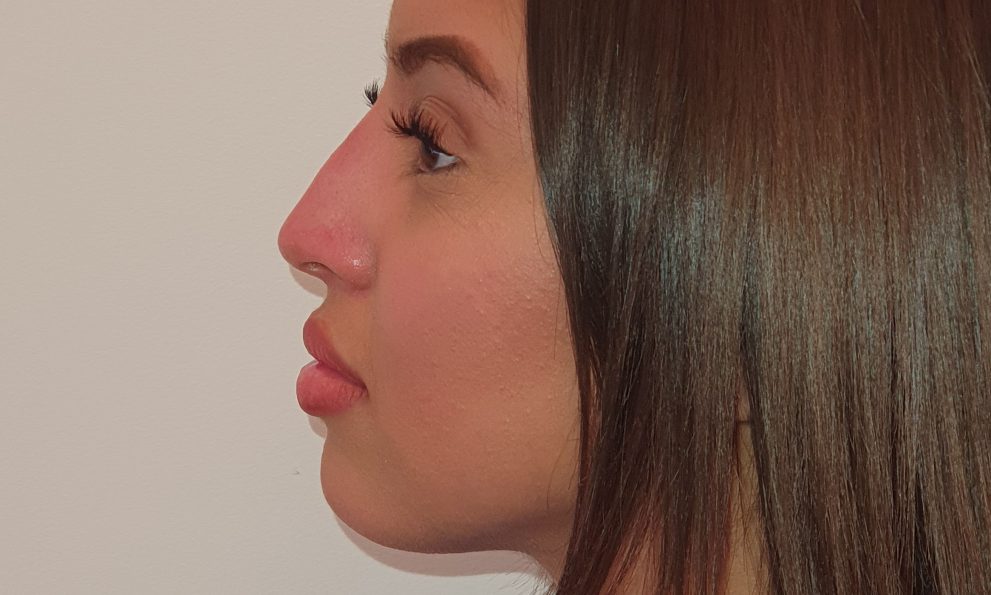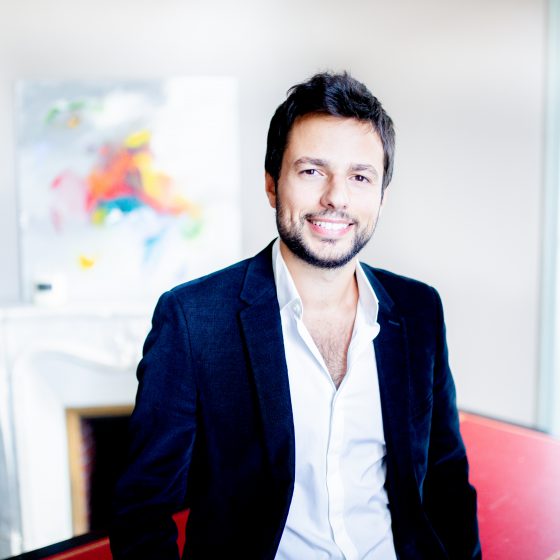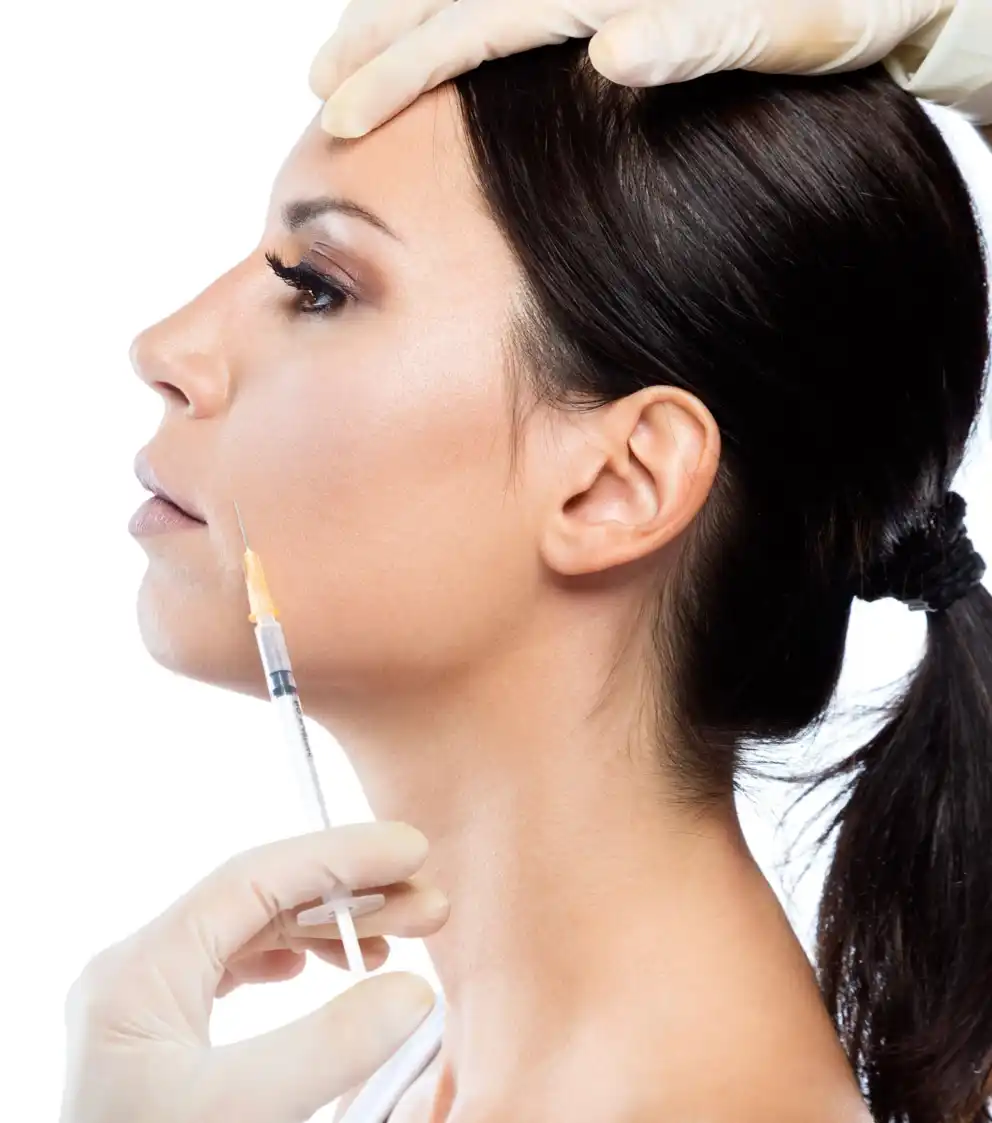RHINOPLASTY IN PARIS: UNDERSTANDING, CHOOSING AND ACHIEVING A SUCCESSFUL NOSE JOB
Rhinoplasty is a technique facial plastic surgery, which improves the aesthetics of the nose. This operation corrects aesthetic defects (hump, wide nose, wide nostrils, hooked tip), but also ventilatory disorders (nasal occlusion).
Your Questions
FREQUENTLY ASKED QUESTIONS ABOUT RHINOPLASTY
HOW LONG DOES IT TAKE TO RECOVER FROM RHINOPLASTY?
The initial recovery after a rhinoplasty lasts an average of 7 to 10 days. A bandage is applied to protect the nose during this period. Although there is no wicking or splinting, some bruises and a slight edema may persist for a few days. Visit final result becomes apparent after several months, when the tissues regain their suppleness and the nose definitively takes on its final shape.
IS RHINOPLASTY PAINFUL?
The rhinoplasty is a surgical procedure which requires a general anaesthetic, but the pain remains moderate, sometimes non-existent, for some patients. Most of the discomfort comes from the sensation of a blocked nose or a slight tugging sensation in the mouth. nostril and nose tip.
CAN AN AFRICAN OR ASIAN NOSE BE CORRECTED?
Yes. The ethnic rhinoplasty allows treat visit defects without denying the patient's identity. Visit doctor adapts its gestures according to the anatomical criteria specific to each origin. It's a made-to-measure approach that respects the diversity of the faces while aiming for a result harmonious.
CAN I GET BACK INTO SPORT QUICKLY?
Walking or gentle yoga can be resumed after 10 days. Impact activities should be avoided for 6 weeks to preserve the sustainability of results and avoid any negative effects on healing.
IS IT POSSIBLE TO HAVE SURGERY BEFORE THE AGE OF 18?
A young man or woman young girl rhinoplasty can be considered from the age of 17, subject to an appropriate examination clinically conclusive. Visit doctor assesses bone growth and talks to parents to gather their feedback. informed consent.
RHINOPLASTY AND BREATHING: WHAT PRECAUTIONS SHOULD BE TAKEN?
A partition deviation can interfere with breathing. Correcting this indication not only improves theaesthetic aspectbut also to restore smooth respiratory function. Rhinoplasty aesthetic and restorative can therefore improve overall quality of life.
CAN I TRAVEL RIGHT AFTER THE OPERATION?
I recommend waiting at least 7 days. Long journeys can accentuate theedema or expose to disorders circulatory system. One opinion medical is recommended before any trip abroad.
WHAT TYPE OF SICK LEAVE TO EXPECT?
Depending on the activity, a 7 to 14-day break is required. Some teleworking patients can return to work sooner, while others must wait until all symptoms have disappeared. problem visible aesthetics.
WHAT IF I DON'T RECOGNIZE MY FACE AFTERWARDS?
This fear is legitimate. A successful rhinoplasty is the one that keeps your sense of identity. Dialogue with the doctorand respect for the face's proportions guarantee a perfect result. natural.
HOW LONG DOES A CONSULTATION IN PARIS TAKE?
An outlet online appointment is possible via Doctolib. Lead times vary from 1 to 4 weeks. For a possible emergency or a functional indication, I can please contact my secretariat directly to 01 88 33 61 61.
If you have a interest for this type of intervention or if you would like more information.information on the reconstructive plastic surgery, the aesthetic medicineor another type of rhinoplastyPlease do not hesitate to contact us.
YOU MAY BE INTERESTED
IN THESE SECTIONS
TO DR. DJIAN

